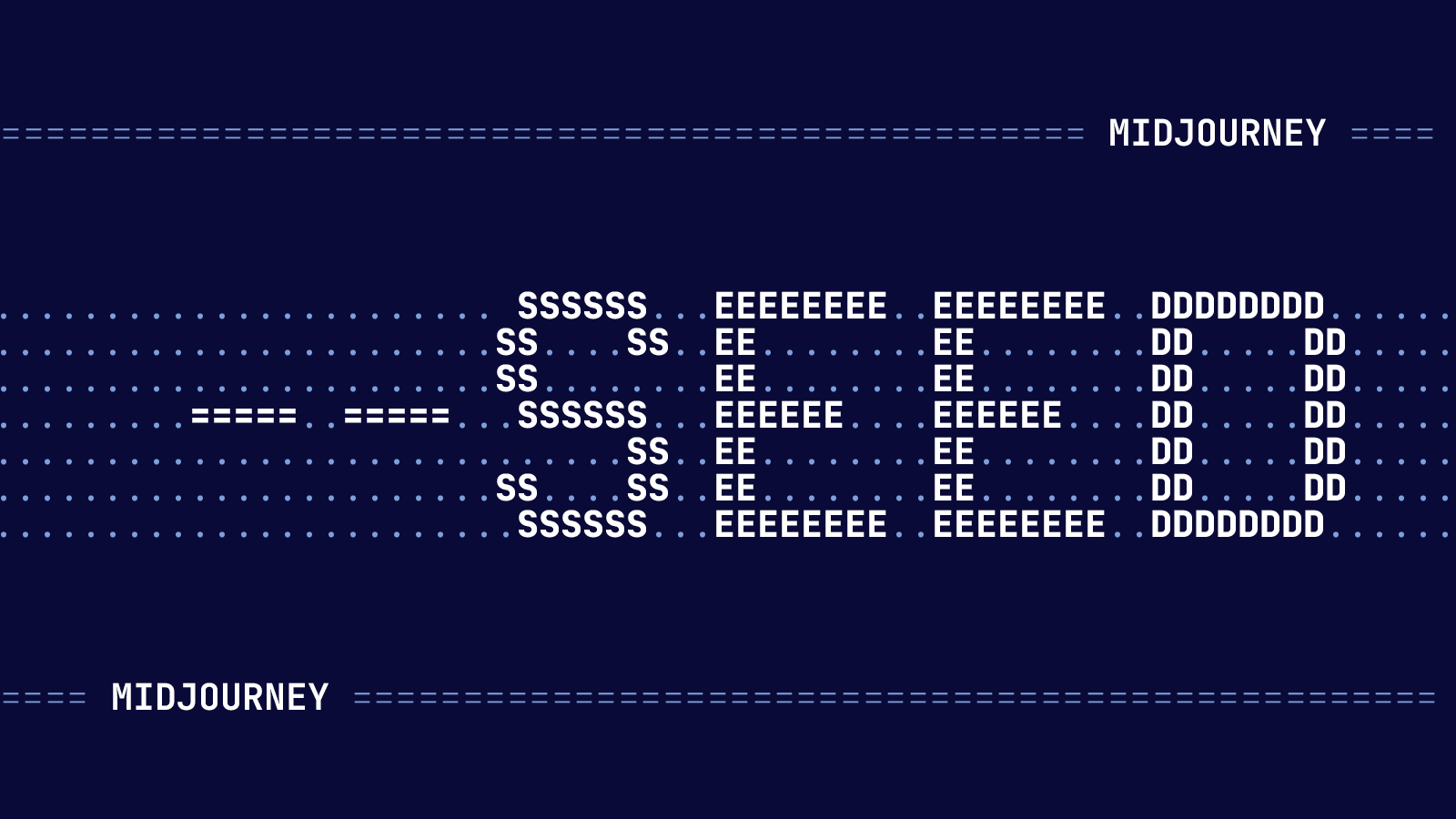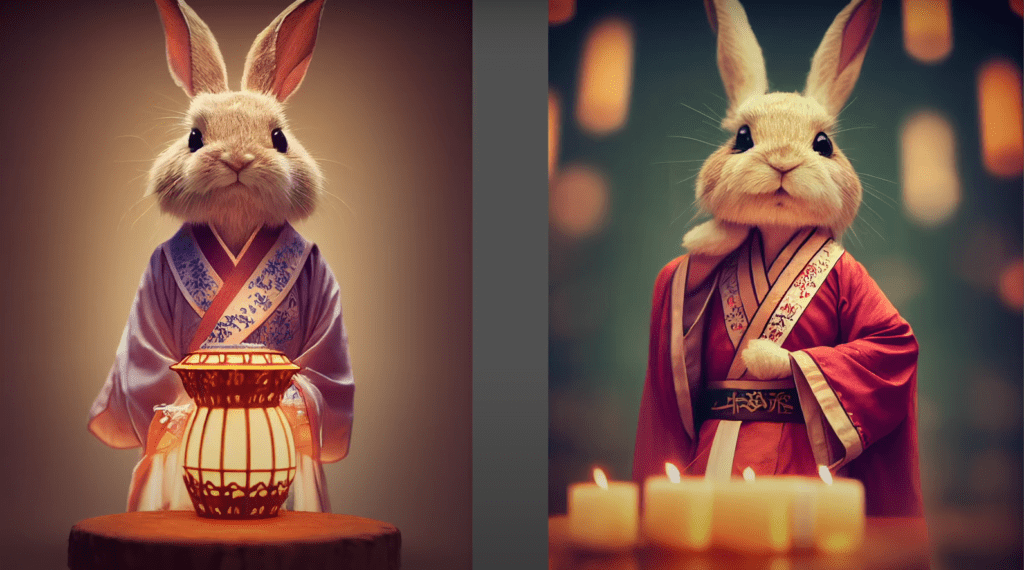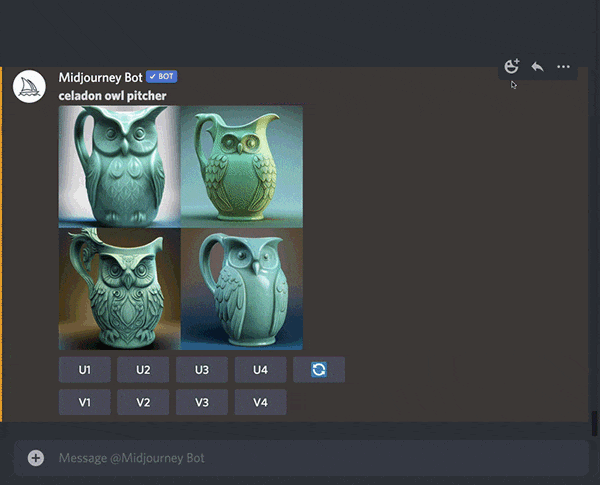Want to know how to use the seed in Midjourney?
Many Midjourney users, beginners or pros, struggle with generating consistent AI image outputs. If you’re looking for a specific result, you may find Midjourney’s default level of randomness a limitation because it adds so much to images.
In this post, we will tell you what seed is in Midjourney and how you can easily create consistent AI images.
What is Seed in Midjourney & Why Is It Important?
While Midjourney is designed for easy use for AI image creators, its default settings can lead to inconsistencies when generating similar images.
To better understand why this occurs and how to achieve more consistent results, we must delve into Seed, which is used as --seed parameter in Midjourney.

Imagine you provide Midjourney with the following prompt:
/imagine a black cat on a sofa
The result is an impressive image of a black cat resting on a sofa, like the image below:

However, if you rerun the same prompt, the resulting image depicts a completely different cat and sofa.

This inconsistency can be attributed to the element of randomness Midjourney employs when generating images.
In Midjourney, a --seed serves as a numerical tool to introduce controlled randomness during the image generation process. Each time Midjourney runs, it chooses a random seed value, influencing the noise patterns utilized in image creation.
The seed parameter takes numbers from 0 to 4294967295 and makes projects look consistent and appealing.
Seeds are especially valuable in marketing, where consistency in visual branding matters. For instance, when crafting a series of travel brand photos, utilizing seeds ensures that the images look cohesive, like a family, rather than unrelated pieces.
Now, let’s understand how you can use the seed in Midjourney.
Do not forget to check out this guide on the best Midjourney prompts to use.
How to Use Seed in Midjourney?
Using seed in Midjourney and creating consistent images using seed values can be achieved by following these steps:
Step 1: Selecting an Appropriate Seed Value
To begin, you need to choose a --seed value. As mentioned above, seed values are whole numbers ranging from 0 to 4294967295. Pick a number within this range to use as your seed value.
OR
If you need to find the seed number for a particular job or image you just created in Midjourney Discord, you can do so by reacting to the job with an ✉️ envelope emoji.

This action will reveal the seed number used for the job, allowing you to reuse or modify it for future prompts. Using the seed value that it will provide you, and adding it to every image you create next to generate variations, you can use the seed value it will provide.
The specific number you choose doesn’t impact the quality of the generated image, but it ensures consistency in the output when used with the same prompt.
Step 2: Include the Seed Parameter into Your Prompt
Once you’ve chosen a seed value or got the value by the envelope, you’ll need to include it in your Midjourney prompt, and this will provide you with consistent images like this:

To do so, add the --seed <value> parameter to the end of your prompt, where <value> represents the seed value you’ve chosen.
For example:
/imagine A cute little rabbit wearing Hanfu, holding a flower, 4K, complex detail, Cinema, reality, detail, Octane rendering, stoic cinematic 4k epic detailed bokeh, photograph shot on kodak, 8K --ar 10:16 --test --seed 13685
You can generate images with similar characteristics by specifying the same seed value and prompt.
Step 3: Apply the Same Seed Value across Different Model Versions
It’s essential to be aware that seed values can yield different results across various Midjourney model versions. When using model versions 1, 2, 3, test, and testp, identical seed values produce images with similar composition, color, and details.

However, when employing model versions 4, 5, and niji, using identical seed values will generate nearly identical images.
Step 4: Utilize the –Sameseed Parameter for Greater Consistency
For an even more consistent output, you can use the --sameseed parameter. The --sameseed parameter generates a single, large random noise field applied across all images in the initial grid.
To employ the same seed parameter, simply add --sameseed <value> to the end of your prompt, where <value> represents the –seed value you’ve chosen.

This will yield very similar generated images. Remember that the --sameseed parameter is only compatible with model versions 1, 2, 3, --test, and --testp.
Step 6: Retrieve Seed Numbers from Past Images
To obtain the seed number for a previously generated image, locate and copy the associated job ID.
Next, use the /show command with the job ID to bring the job back into view.

Finally, react to the newly regenerated job with an ✉️ envelope emoji. This will reveal the seed number, allowing you to utilize it in future prompts for consistent results, as discussed in Step 2.
Step 7: Alter Seed Numbers for Different Outputs
If you wish to change the seed value for a prompt, you can do so by modifying the number in the --seed or --sameseed parameter in your prompt.

By experimenting with different seed values, you can generate various outputs while maintaining control over the degree of consistency in your images.
That’s it. Now you’ve learned how to use seed effectively in Midjourney.
Watch This to Understand How Seed Works in Midjourney
The End!
Using seeds in Midjourney might not bring results in your first few image renderings, but eventually, you’ll learn how to add seeds and generate consistent images.
With this comprehensive step-by-step guide, even those new to Midjourney can effortlessly manipulate the AI’s capabilities to produce consistent and visually captivating images.
So, share it with the online AI community and your friends, and in case you want to learn more, here are some awesome resources:
- The Complete List of Banned Words In Midjourney You Need to Know
- How to Maximize Midjourney Image Resolution (Step-by-Step)
- 5 Prompt Tutorials You Can Check For Stable Diffusion, DALL E and Other Text-to-Image Models
- 10 Best Midjourney Anthropomorphic Prompts










